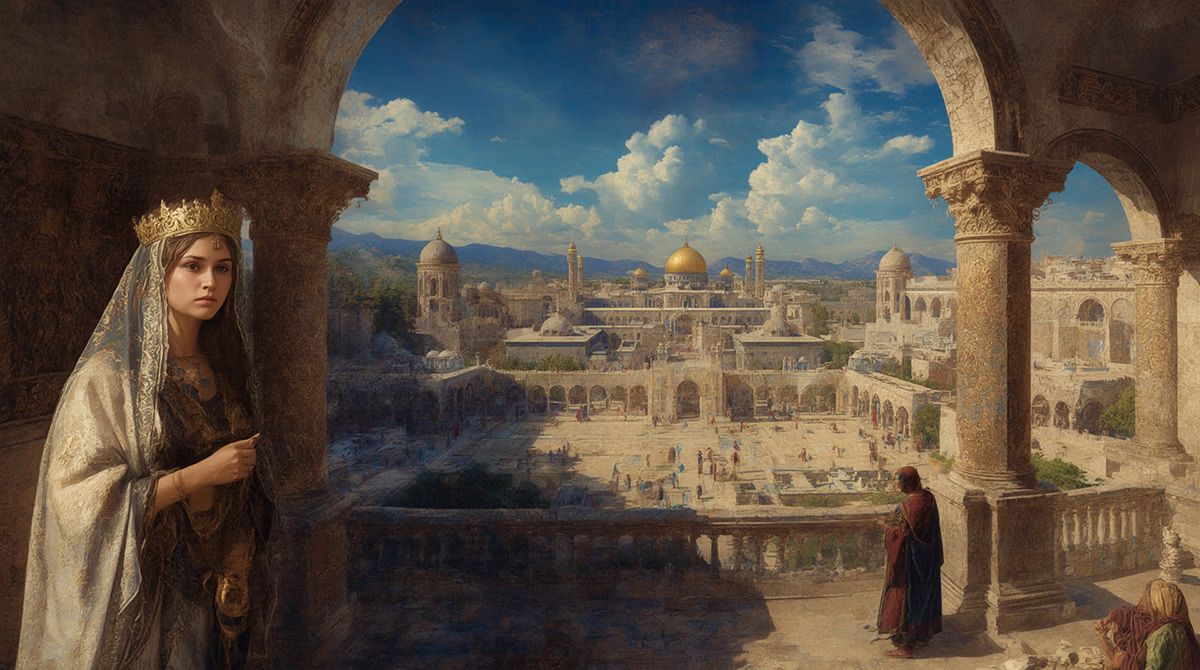
In our contemporary world of political upheaval, cultural manipulation, and seemingly random events, believers often struggle to discern God’s providence at work. The Book of Esther 2 provides a masterful demonstration of how divine sovereignty operates behind the scenes, orchestrating circumstances that appear coincidental but serve eternal purposes. As Chuck Frank emphasizes in his teaching, though God’s name never appears in the Book of Esther, His providential hand is unmistakably present in every detail.
Table of Contents
Introduction: Recognizing God’s Providence in Turbulent Times
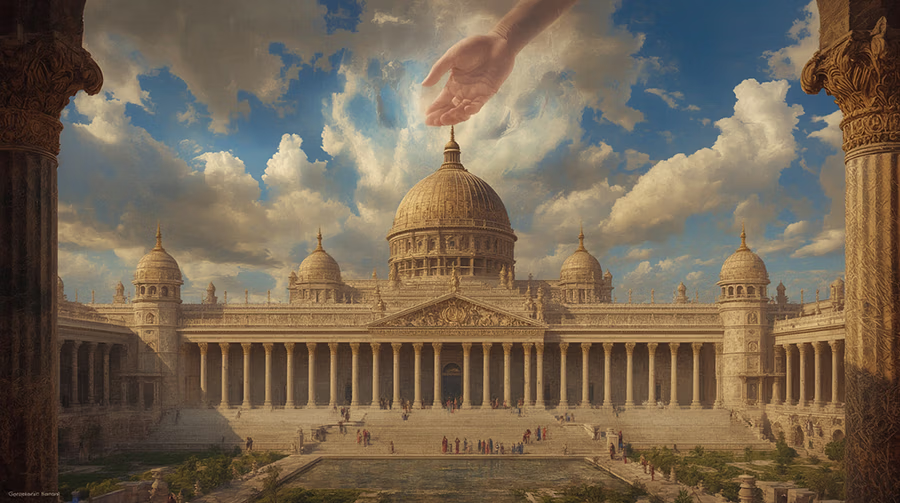
The story of Esther unfolds during a critical period when God’s providence becomes the invisible force guiding nations, positioning unlikely individuals for divine purposes, and working through the schemes of ungodly leaders to accomplish His will. For those committed to seeing our Constitutional Republic survive and thrive, Esther chapter 2 offers invaluable insights into how divine sovereignty intersects with political realities and personal faithfulness.
Understanding God’s providence demonstrated in Book of Esther 2 requires recognizing that divine orchestration often works through natural circumstances, human decisions, and even the manipulative schemes of those who oppose God’s people. This principle remains as relevant today as it was in ancient Persia, providing believers with hope and direction in uncertain times.
Book of Esther 2 Historical Context: When Defeated Leaders Seek Distraction
Between chapters one and two of Esther, four crucial years elapsed – years that fundamentally altered the Persian Empire and King Xerxes personally. During this time, Xerxes embarked on his infamous invasion of Greece, convinced he could expand his empire westward and establish himself as an unstoppable world conqueror.
The historical reality proves sobering for any leader who believes in their own invincibility. Xerxes suffered crushing defeats at three pivotal battles that shattered both his military ambitions and personal confidence. At Thermopylae, a small force of Spartans under King Leonidas dealt significant damage to his massive army, demonstrating that courage and conviction could prevail against overwhelming odds. The naval disaster at Salamis saw 1,400 Persian ships fail against 380 Greek vessels, proving that superior numbers mean nothing without divine blessing. Finally, at Plataea, Spartan forces destroyed the bulk of Persian forces and chased the remnants back to the Asian coast.
Chuck Frank’s teaching emphasizes how Xerxes “left thinking he was a God and came back absolutely shamed”. This transformation reveals a crucial principle: when earthly leaders face humbling defeats, they often seek distractions to restore their sense of power and control. Modern believers can observe similar patterns in contemporary politics, where leaders facing scandals or failures often manufacture crises or pursue dramatic policies to redirect public attention.
The beauty contest that would elevate Esther arose directly from this context of defeat and manipulation. Xerxes returned to Susa longing to reunite with Queen Vashti and his young son, but the unchangeable law he had signed in drunken rage prevented this reconciliation. God’s providence used even this foolish decision to create the circumstances necessary for placing a Jewish woman in the Persian palace.
For believers today, this historical context demonstrates how divine providence can work through the failures and poor decisions of worldly leaders to accomplish spiritual purposes that transcend political circumstances.
Political Manipulation vs. Divine Sovereignty
Book of Esther 2 shows how the scheming advisors surrounding Xerxes provide a striking parallel. to modern political dynamics where influence peddlers manipulate leaders for personal gain. As Chuck Frank describes, these “deep state group of seven princes” recognized that Xerxes wanted Vashti back and feared losing their influence if she returned to power. Their solution – a beauty contest involving hundreds of young virgins from across the empire – reveals how political manipulation often masks selfish motives behind seemingly reasonable proposals.
This scenario demonstrates a fundamental principle of God’s providence: divine sovereignty operates through and despite human scheming. The advisors believed they were protecting their positions and preventing Vashti’s return, but God’s providence used their manipulation to position Esther exactly where she needed to be for future deliverance of the Jewish people.
The beauty contest itself represents a tragic example of how political power corrupts and objectifies. Young women from 127 provinces were forcibly gathered, subjected to twelve months of beauty treatments, and presented to the king for his selection. Those not chosen became permanent concubines, separated from their families and stripped of their freedom. This system reveals the brutal reality of absolute political power unchecked by moral constraints – a warning that resonates powerfully for those committed to constitutional government and individual liberty.
Yet divine providence transforms even this exploitation into an instrument of salvation. Through our comprehensive Bible Messages series, we see repeatedly how God works through imperfect human systems to accomplish His purposes while holding individuals accountable for their choices.
Modern believers must recognize similar patterns in contemporary governance, where political manipulation often serves divine purposes beyond human comprehension. This understanding should inspire both vigilant citizenship and confident trust in God’s ultimate sovereignty over human affairs.
The archaeological evidence from Susa confirms the historical accuracy of these events, with excavations revealing the actual foundation pavers of the harem where these women were kept. This physical evidence strengthens our confidence in the biblical account and reminds us that God’s providence operates in real history, not mythical tales.
The Unlikely Chosen in Book of Esther 2: Mordecai and Esther’s Divine Positioning
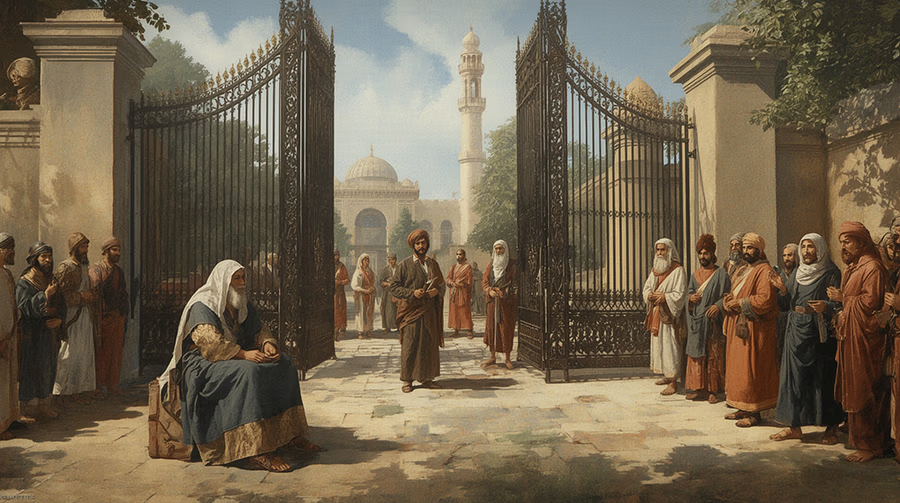
God’s providence consistently chooses the most improbable candidates to accomplish His greatest works, and Esther chapter 2 provides a perfect example of this principle. Mordecai, a descendant of captives taken from Jerusalem over a century earlier, represents the overlooked remnant living in exile rather than returning to the promised land. His very name, possibly derived from the Babylonian god Marduk, suggests the cultural assimilation that exile Jews experienced.
Yet Book of Esther 2 reveals how this seemingly compromised Jewish man becomes instrumental in God’s plan. Mordecai’s decision to adopt his orphaned cousin Hadassah (later called Esther) demonstrates compassion and responsibility that divine providence would use for national deliverance. The text emphasizes that Esther was “lovely and beautiful,” but more importantly, she possessed the character and obedience necessary for her future role.
Chuck Frank highlights how “God is using all of that” to bring about providential outcomes. Neither Mordecai nor Esther understood their significance at this point in the story, yet God’s providence was preparing them through ordinary circumstances for extraordinary purposes. This principle encourages modern believers who may feel insignificant or overlooked – divine sovereignty often works through those who seem least likely to succeed.
Mordecai’s positioning at the king’s gate proves crucial for multiple reasons. Initially motivated by concern for Esther’s welfare, his presence there enables him to overhear the assassination plot against Xerxes. This “coincidence” demonstrates how God’s providence positions faithful people in strategic locations to serve divine purposes they cannot yet comprehend.
Through our Five Smooth Stones spiritual toolkit, believers can develop the same character qualities that made Mordecai and Esther available for God’s use: compassion, faithfulness, obedience, and strategic positioning through consistent spiritual disciplines.
The concealment of Esther’s Jewish identity, while controversial to some, illustrates wisdom and timing in divine providence. Mordecai’s instruction for secrecy protected Esther while she established herself in the palace, preparing for the moment when revelation would serve God’s purposes rather than endanger His people. This demonstrates that God’s providence sometimes requires patient preparation rather than immediate disclosure.
Modern believers facing similar crossroads between disclosure and discretion can learn from this example, seeking divine wisdom about timing and strategy while maintaining absolute faithfulness to God’s ultimate purposes.
Preparation and Providence in Spiritual Formation
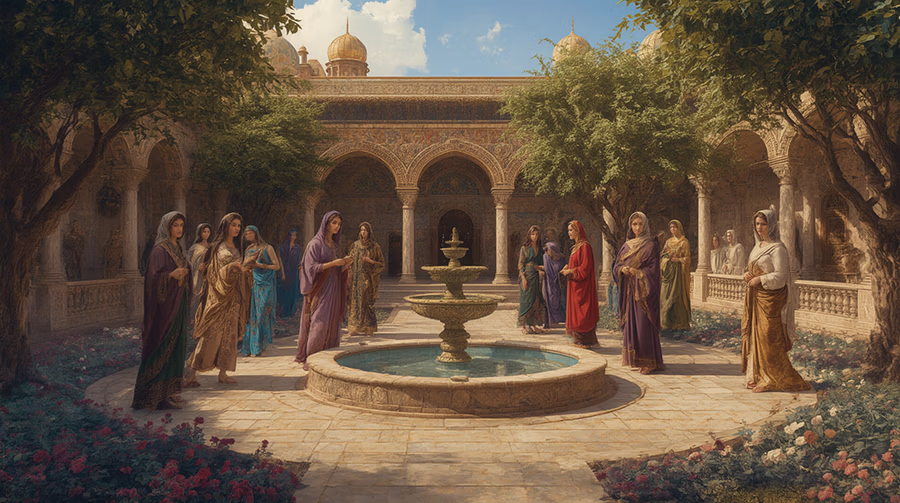
Book of Esther 2 describes the twelve-month preparation period that each candidate underwent, revealing profound principles about how God’s providence operates through processes of spiritual formation and character development. Chuck Frank emphasizes how Esther’s experience “is God’s providential hand getting her ready to be Queen”, highlighting the connection between divine preparation and earthly responsibilities.
The preparation regimen – six months with oil of myrrh followed by six months with perfumes and beautifying treatments – represents purification and refinement that extends far beyond physical appearance. Myrrh, traditionally used for purification and preservation, symbolizes the death to self that precedes spiritual elevation. The extended timeline demonstrates that divine providence rarely rushes character formation, allowing sufficient time for deep transformation.
Esther’s attitude during preparation distinguishes her from other candidates. While others requested additional adornments and accessories, “Esther requested nothing but what Hegai the king’s eunuch, the custodian of the women, advised”. This humility and willingness to receive guidance reveals the teachable spirit that God’s providence requires for significant ministry.
Hegai’s favor toward Esther represents another aspect of divine providence – how God grants favor with key individuals who can facilitate His purposes. The eunuch’s extra attention and coaching, providing “beauty preparations besides her allowance” and “seven choice maid servants,” created advantages that natural circumstances alone cannot explain.
For contemporary believers, this preparation period offers crucial insights for spiritual development. Through our The 4-3 Formula biblical framework, Christians can understand how God’s providence uses seasons of preparation to develop the character and skills necessary for future service.
The text notes that Esther “obtained favor in the sight of all who saw her”, suggesting that genuine spiritual preparation produces character that others naturally recognize and respect. This principle applies directly to believers preparing for various forms of ministry or service in our Constitutional Republic – character development precedes and enables effective leadership.
Esther’s continued obedience to Mordecai throughout this period demonstrates how divine providence honors faithfulness in relationships even when circumstances change dramatically. Her royal position did not diminish her respect for her adoptive father, showing that true spiritual maturity maintains proper relationships regardless of external elevation.
Archaeological Confirmation of Book of Esther 2’s Biblical Truth
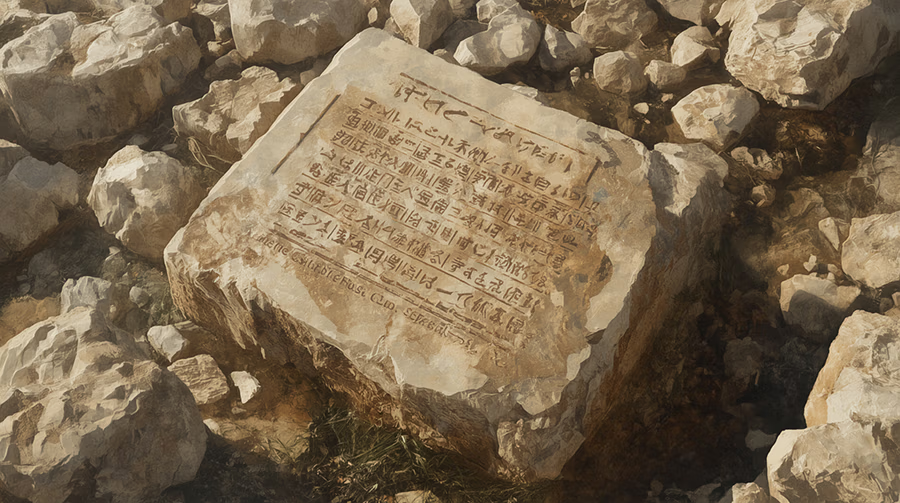
The physical evidence uncovered at ancient Susa provides powerful confirmation of the biblical account’s historical accuracy and strengthens our confidence in God’s providence working through actual historical events. Chuck Frank’s presentation includes compelling archaeological discoveries that bring the Esther narrative into sharp historical focus.
The actual foundation pavers from the harem described in Book of Esther 2, inscribed in Persian and discovered during excavations, prove the existence of the women’s quarters described in Esther 2. These tangible artifacts connect modern believers directly to the historical reality of Esther’s experience, demonstrating that divine providence operates in verifiable history rather than religious mythology.
Excavations have revealed the magnificent audience hall (apadana) where Xerxes held his great banquet, with thirty-six columns originally standing sixty-five feet high and weighing over twenty-five tons each. The scale and grandeur of these discoveries help modern readers appreciate the overwhelming nature of the Persian court where God’s providence positioned a Jewish orphan girl.
The famous glazed-brick “Frieze of Archers” discovered throughout the palace depicts life-sized Persian warriors, possibly the elite Immortals, providing visual context for the military culture surrounding Esther. These artistic elements reveal the intimidating environment where divine courage would be required for approaching the king uninvited.
Personal artifacts including makeup tools, bronze mirrors, and beauty implements found at the harem site give intimate glimpses into the daily lives of women in Esther’s situation. These discoveries validate the biblical description of the extensive beauty preparations and demonstrate God’s attention to specific details in His providential plan.
The excavated paving stones from the king’s gate, where Mordecai would have waited and overheard the assassination plot, provide physical connection to pivotal moments in the narrative. Standing on this same ground, modern visitors can appreciate how God’s providence used specific locations and circumstances to accomplish His purposes.
Through our Resources section, believers can access additional archaeological materials that strengthen faith by confirming biblical accuracy. This evidence supports the principle that divine providence works through real historical events rather than spiritual allegories, encouraging believers to trust God’s ongoing activity in contemporary circumstances.
The preservation of these archaeological remains across millennia demonstrates how God’s providence ensures that evidence of His faithfulness remains available for successive generations. This encourages modern believers to document and preserve testimonies of divine activity in their own experiences.
Practical Applications for Constitutional Living
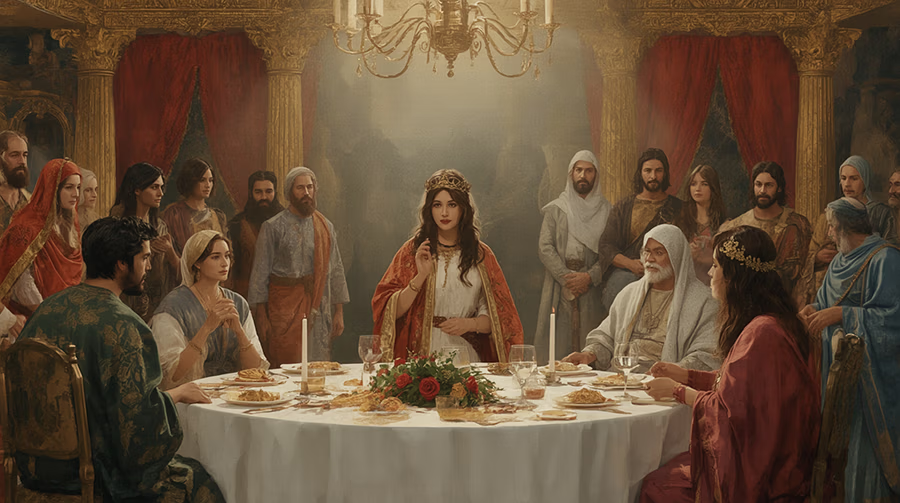
The principles of God’s providence demonstrated in Esther 2 provide essential guidance for believers committed to preserving constitutional government and biblical values in contemporary society. Understanding how divine sovereignty operates through political systems offers both encouragement and practical direction for faithful citizenship.
Mordecai’s vigilance at the king’s gate exemplifies the civic responsibility that God’s providence requires from believers in positions to observe and influence government. His awareness of the assassination plot and prompt reporting demonstrates how divine sovereignty expects faithful citizens to protect legitimate authority even when those authorities are imperfect. This principle directly applies to modern believers who must engage thoughtfully with political processes while maintaining spiritual priorities.
The corruption and manipulation surrounding Xerxes illustrates why the founders of our Constitutional Republic established checks and balances to prevent concentrated power. God’s providence can work through flawed leaders, but believers must support systems that limit human capacity for abuse and protect individual liberty. Through our Mission to illuminate current events with biblical truth, we recognize that constitutional government requires spiritual foundations to function effectively.
Esther’s preparation period offers crucial insights for believers preparing to serve in various capacities within civil society. Just as divine providence used twelve months to prepare Esther for queenship, modern Christians must invest in character development, skill acquisition, and spiritual formation before expecting significant influence. This preparation includes understanding constitutional principles, developing practical competencies, and cultivating the wisdom necessary for righteous leadership.
The principle of strategic positioning demonstrated by Mordecai and Esther encourages believers to seek roles where they can influence society for good while maintaining spiritual integrity. God’s providence rarely places people in positions of influence accidentally – usually, divine sovereignty works through deliberate choices to pursue excellence, serve others, and remain faithful in small responsibilities.
Esther’s continued obedience to Mordecai despite her elevated position illustrates how divine providence honors proper authority relationships even in changing circumstances. Modern believers must maintain accountability to spiritual mentors and biblical principles regardless of professional or political success, recognizing that character integrity enables sustained influence.
Through our Today’s Concerns series, believers can develop skills for applying biblical wisdom to contemporary political and cultural challenges. Understanding God’s providence provides the confident foundation necessary for principled engagement with complex societal issues.
The concealment and revelation of Esther’s identity teaches strategic wisdom about timing and disclosure in public service. Sometimes divine providence requires patient preparation and careful positioning rather than immediate public identification with controversial positions. Believers must seek divine guidance about when to speak boldly and when to work quietly behind the scenes.
Contemporary Relevance for Modern Believers
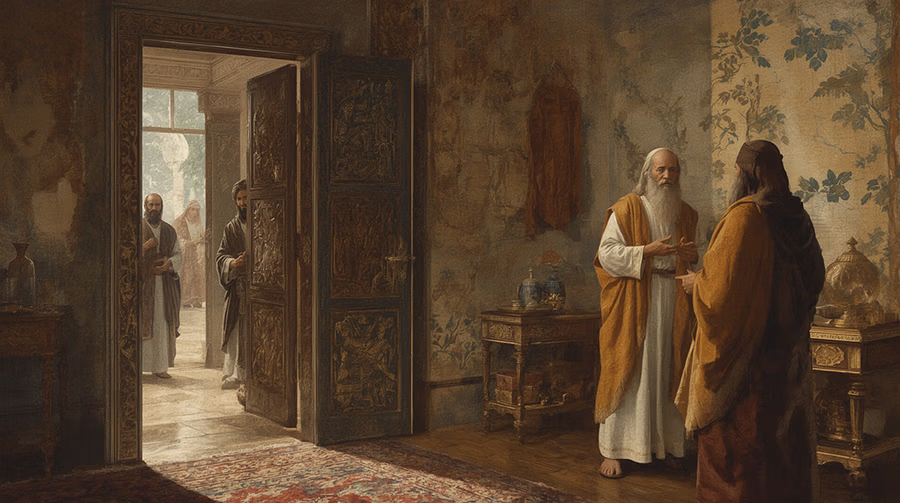
The timeless principles of God’s providence revealed in Esther 2 speak directly to contemporary challenges facing believers navigating cultural upheaval, political manipulation, and personal uncertainty. Understanding how divine sovereignty operated in ancient Persia provides both hope and practical guidance for modern Christians seeking to serve faithfully in similar circumstances.
The “deep state” manipulation Chuck Frank describes around Xerxes mirrors contemporary political dynamics where influential groups work behind the scenes to shape policy and public opinion. Recognizing this pattern helps believers understand that God’s providence can work through and despite such manipulation, using even corrupt schemes to accomplish divine purposes. This perspective encourages faithful civic engagement without naive trust in political systems.
Modern believers facing career changes, family transitions, or cultural pressures can draw encouragement from Esther’s unexpected elevation and the providential preparation that preceded it. Divine providence often positions people through circumstances that seem random or unfair, but retrospective understanding reveals careful orchestration for specific purposes. This truth provides hope during seasons of waiting and apparent insignificance.
The principle of preparation through adversity applies directly to contemporary spiritual formation. Just as Esther’s orphaned status and cultural displacement prepared her for cross-cultural ministry in the Persian court, modern challenges often develop character qualities and skills necessary for future service. Through our Community resources, believers can find encouragement and practical support during difficult preparation periods.
Mordecai’s example of faithful vigilance provides a model for contemporary believers in various professions who encounter corruption, injustice, or threats to others. God’s providence expects Christians to remain alert, speak truth when appropriate, and take protective action when possible. This responsibility applies whether serving in government, education, healthcare, business, or other fields where believers can influence society for good.
The relationship between Mordecai and Esther demonstrates how divine providence often works through mentoring relationships and mutual accountability. Modern believers benefit from both seeking wise counsel and providing guidance to others, recognizing that God uses these relationships to accomplish purposes beyond individual understanding.
Esther’s favor with Hegai illustrates how God’s providence can grant supernatural influence with key individuals who control access and opportunities. Contemporary believers should pray for such favor while maintaining character integrity that naturally attracts respect and cooperation from others.
The archaeological confirmation of biblical accounts encourages modern believers to trust that God’s providence continues operating in real history and contemporary circumstances. Physical evidence of divine faithfulness in the past strengthens confidence for current challenges and future uncertainties.
Through our G-Drop timely commentaries, believers can learn to recognize divine providence in current events and respond with wisdom rather than fear or political partisanship.
Conclusion: Trusting God’s Timing in Uncertain Seasons
The magnificent tapestry of God’s providence woven throughout Book of Esther 2 provides enduring hope for believers navigating the complexities of modern life while remaining faithful to biblical principles. As Chuck Frank emphasizes, though “God’s name is not mentioned once” in this book, “God’s providential hand is everywhere”. This invisible sovereignty continues operating in contemporary circumstances, positioning people, orchestrating events, and accomplishing divine purposes through seemingly ordinary situations.
The transformation of Esther from orphaned exile to Persian queen demonstrates how divine providence can elevate the most unlikely candidates to positions of strategic influence. Modern believers facing discouragement about their significance or effectiveness can take comfort knowing that God continues working through ordinary people in extraordinary ways. Character development and faithful obedience in small matters prepare individuals for larger responsibilities they cannot yet imagine.
Mordecai’s patient vigilance and Esther’s humble preparation offer timeless models for believers committed to serving both God and country in our Constitutional Republic. Understanding God’s providence provides the confident foundation necessary for principled engagement with political systems, cultural challenges, and personal difficulties without succumbing to either naive optimism or cynical despair.
The historical accuracy confirmed by archaeological evidence strengthens our confidence that divine providence operates in real history rather than spiritual allegory. This truth encourages believers to expect and recognize God’s activity in contemporary circumstances, maintaining hope and strategic thinking even during seasons of apparent chaos or defeat.
As we apply these principles from Esther 2 to modern discipleship, we must remember that God’s providence requires both divine sovereignty and human responsibility. Like Mordecai and Esther, contemporary believers must position themselves strategically, prepare diligently, maintain character integrity, and remain obedient to divine guidance while trusting God to accomplish purposes beyond human comprehension.
The beauty contest that elevated Esther arose from political manipulation and personal defeat, yet divine providence transformed these negative circumstances into the foundation for national deliverance. This principle provides hope for modern believers who see corruption, confusion, and cultural decline around them – God’s sovereignty can work through and despite such circumstances to accomplish His eternal purposes.
Through faithful study of Scripture, strategic positioning in society, character development through adversity, and confident trust in divine timing, contemporary Christians can participate in God’s providence just as effectively as these ancient heroes. The same God who orchestrated events in ancient Persia continues working today, inviting believers to join His redemptive activity in our generation.
FAQ
What is the significance of God’s hidden hand in Esther chapter 2?
Esther 2 demonstrates God’s invisible yet sovereign orchestration of events – using Xerxes’s political failures, the princes’ schemes, and Hegai’s favor – to position Esther for national deliverance. Though God’s name is never mentioned, His providence is the central theme guiding every development.
Why did Esther keep her Jewish identity secret?
Mordecai instructed Esther to conceal her heritage to protect her life and God’s people during her preparatory year in the harem. This strategic discretion ensured that the timing of her revelation would serve divine purposes rather than endanger her or the Jewish community.
How do archaeological discoveries at Susa confirm the biblical account?
Excavations at ancient Susa have uncovered the harem foundation documents, glazed-brick friezes, the apadana audience hall columns, and paving stones from the king’s gate – tangible artifacts that corroborate the Book of Esther’s historical details and underscore the reality of God’s providence in history.
What practical lessons can modern Christians learn from Esther’s preparation period?
Esther’s twelve-month regimen symbolizes spiritual purification, character formation, and submission to wise counsel. Believers today can apply this principle by engaging in consistent spiritual disciplines, seeking godly mentorship, and allowing God time to prepare them for future influence.
Further Reading
For deeper exploration of Esther chapter 2, the following resources provide valuable commentary, historical context, and archaeological insights:
- Esther 2 – Enduring Word Bible Commentary by David Guzik
A verse-by-verse exposition with practical application and theological notes. - Evidence for the Book of Esther on Cross Examined
Archaeological and historical data supporting the authenticity of Esther’s palace in Susa. - Susa – BiblePlaces.com
Photographic tour and archaeological report on the Persian capital where Esther’s story unfolds. - Book of Esther | Guide with Key Information and Resources by The Bible Project
Overview of Esther’s themes, structure, and signs of God’s hidden hand throughout the narrative. - Esther 2 Study Notes – CSB Study Bible Commentary on BibleStudyTools
Concise study notes highlighting cultural background, theological insights, and narrative flow. - Esther Chapter 2 – Bible Study (PDF) by Bible-studys.org
Traditional exegesis with focus on chronology, textual variants, and spiritual lessons.

